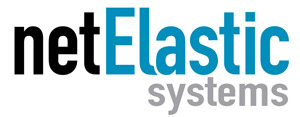Virtual (or software-based) Broadband Network Gateways (vBNGs) are increasingly being adopted by broadband providers. Why?
I’ll discuss three reasons below, with additional input from a few netElastic vBNG customers.
Insatiable Bandwidth Demand
The never-ending demand for more bandwidth is a key driver for vBNG growth. The well-known Nielsen Law of Internet Bandwidth states that a high-end user’s connection speed grows by 50% per year. That may seem high. However, the Nielsen Law has pretty consistently held true for almost 30 years. This is relevant since many broadband providers use their highest data speed offering as a gauge to help “size” their network.
Video streaming and gaming have primarily driven the demand for more bandwidth. And the global pandemic has accelerated our demand for more bandwidth as the internet has become critical to our daily lives.
It’s no surprise broadband providers are now looking for more scalable and flexible edge networks. They need to be agile and move quickly. Fast changes in demand require fast changes in network capacity.
Increased Scalability

vBNGs increase network scalability by separating network functions from proprietary hardware appliances. By separating network functions from the physical infrastructure, you don’t have to purchase additional hardware appliances every time you need more network capacity. Capacity can be quickly added with a few software commands.
Telpin is a high-speed internet service provider in Argentina that was looking for greater scalability. According to Martin Pagano, Telpin’s Technical Manager, “netElastic’s next-generation vBNG has brought us greater scalability and flexibility, which has enabled us to provide an even better customer experience. Martin continued “vBNG’s scalability will allow us to keep pace with network demands from our expanding subscriber base. Best of all, we won’t have to continually replace our infrastructure.”
Turning from Argentina to the United States, Softcom is a wireless internet service provider (WISP) whose mission is to provide fast, reliable, and affordable internet access to everyone who needs it – no matter where they live. After purchasing netElastic vBNG, Brian Meredith, Softcom’s CTO said “It seems to be scaling very well and we’re just barely scratching the surface of the solution we’ve put together. The netElastic vBNG we bought is going to scale for a very long time. Our experience has been overwhelmingly positive.”
The Cost Savings are Significant
Many broadband providers are buying vBNGs for a simple reason: lower costs. And in many cases, much lower costs. Let’s hear what some customers have to say:
FiOS Tecnologia is a growing Brazilian internet service provider whose mission is to increase the availability of fast, reliable internet access in the Amazon region of Brazil. Lucio Costa, FiOS CEO and Founder, said “The best part of netElastic vBNG is the price of licenses, which give ISPs the opportunity to grow their businesses with the quality and stability that’s similar to solutions that are ten times more expensive.”
Praction Networks is a rapidly expanding broadband provider in India. Rohit Kumar, Co-Founder and CTO at Praction, said “Before choosing netElastic vBNG, we had multiple rounds of discussions with traditional hardware-based vendors, and the difference between netElastic and the hardware-based vendors was huge. With netElastic, we saved lots of money.”
Broadband providers are increasingly buying vBNGs due to greater bandwidth demand, increased scalability, and significant cost savings. To learn more about how broadband providers are benefitting from vBNGs, please feel free to read any of the following case studies:
- Telpin – an ISP in Argentina
- Softcom – a WISP in the United States
- FiOS Tecnologia – an ISP in Brazil
- Praction Networks – a broadband provider in India
